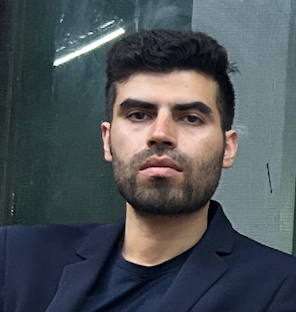Isolated gestures are rarely noticed while observing body language. Often, a person will convey his emotional state via more than one gesture and this combination of gestures is known as a gesture cluster.
While analyzing body language, it’s imperative that you take into account as many gestures as possible because that will provide a more holistic and clearer picture of the person’s current emotional state. In this article, we discuss the meanings of 3 common gesture clusters:
1) The catapult
This gesture cluster is a powerful signal of dominance and confidence. It is a combination of hands-clenched-behind-head and the figure four gesture.
We clench our hands behind our heads this way when we feel confident about what’s going on and crossing the legs in the figure four position signals competence and dominance.

The person is non-verbally saying “I know everything, you don’t know shit” or “I’m the boss here. Everything’s under my control” or “I know about this topic more than anyone else in the room”.
It is predominantly a male gesture because men usually care more about dominance, power, and confidence than women. This gesture may also be done by someone when he wants to convey a relaxed attitude to lull you into a false sense of safety before he ambushes you.
2) The chair straddle
There are two important things to consider in this yet another predominantly male gesture. First, the way the person forms a barrier in front of him using the back of his chair, and second, how this gesture enables the guy to spread his legs (crotch display) behind his contrived shield.

Erecting a barrier of any kind in front of the body invariably signals defensiveness. But once a person successfully erects a barrier, he can attack confidently and aggressively. Just as soldiers back in the day used to swing their swords with one hand whilst protecting their bodies using shields with the other hand.
Even today, you can see police officials use shields as they take on the protesters or soldiers erecting bunkers in front of them as they fire rounds after rounds at the enemy.
So, even though this gesture seems like a defensive one, the underlying message is aggression and dominance. The person doing this gesture feels like a gladiator ready to fight a lion, a Hannibal ready to take on the Romans.
You might notice this gesture in any group discussion, friendly chit-chat or even a one-to-one conversation. The person who takes up this gesture is very likely to talk in a confident, aggressive or argumentative manner.
Leg-over-the-chair
This is yet again a male gesture. In this gesture, a person sitting in his chair will lean back and put his one leg over the armrest of the chair. If the armrest of the chair is too high, then the person may put his one arm over it instead of a leg.

Leaning backward conveys apathy and lack of concern, a ‘cool’ attitude. Putting one leg over the armrest of the chair means the person is claiming ownership of the chair and this action also enables him to open up his crotch, a dominance signal.
Apathy + territorial ownership + dominance
That’s the best combination of emotional states a man can be in. This gesture is only taken up in a very comfortable and relaxed atmosphere where the person knows no danger or threat can ever touch him.
You’ll see two male friends often taking up this position when they’re chilling out, joking and laughing.
Also, this gesture can be seen in males when they’re watching a woman dance in a club or something. It’s common in the movies, especially in Bollywood, that the male protagonist sits in this position as he watches a vamp dance, occasionally sipping some beer.
3) Clenched hands and more
In non-verbal communication, clenched hands in front of the body always signal self-restraint. The person who does this gesture may be controlling his disapproval, anger, negative reply- virtually anything. But it is always something negative.
You can narrow down exactly what this negative thing is that the person is holding back by looking at the context of the situation or at other supplementary gestures done alongside this gesture.
Clenching hands + mouth cover
The person doing this gesture is trying not to say something negative. It can also mean that he wants someone to shut up and stop talking nonsense. It can even mean, “I’m still thinking about it, I have nothing to say”.

Clenching hands + thumbs display
Even though the person is exercising self-control, displaying the thumbs means that he wants others to know that everything’s cool. He’s either feeling reserved and dominant at the same time or he’s hiding his need for self-control by displaying dominance.
Clenching hands + steeple
Look carefully at the image below. The hand gesture that this mustached man has taken up is a combination of the steeple gesture and clenched hands. It is actually a mid-point showing the transition between these two gestures.

Either the person had taken up the steeple gesture first (confidence) and something in the conversation came up that made him develop a restrained attitude (clenched hands), or he’s shifting to the confident steeple gesture from the clenched hand’s gesture.
